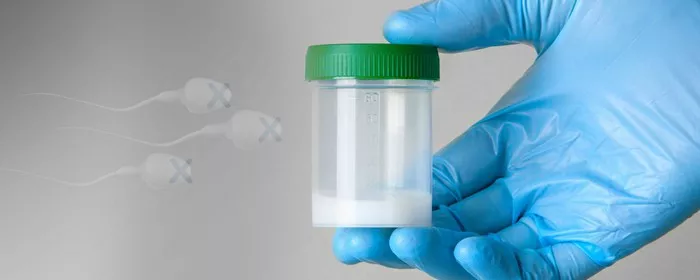A semen analysis is a crucial diagnostic tool used to evaluate male fertility potential. This test examines the health and viability of sperm, playing an essential role for couples experiencing difficulty conceiving. By analyzing various parameters of the semen, healthcare providers can gain insights into potential underlying issues affecting fertility. This article will explore the components and importance of a semen analysis, when it is recommended, the procedure involved, how to interpret the results, and ways to improve semen quality.
I. What Does a Semen Analysis Test Look For?
Sperm Count
Sperm count is one of the primary parameters measured in a semen analysis. It refers to the number of sperm present in a given volume of semen. A normal sperm count is typically between 15 million to 200 million sperm per milliliter of semen. Having a low sperm count, also known as oligospermia, can significantly reduce the chances of fertilizing an egg, thus affecting fertility. Severe cases, where there is a complete absence of sperm, are referred to as azoospermia.
Sperm Motility
Sperm motility is the ability of sperm to move efficiently through the female reproductive tract to reach and fertilize the egg. This parameter is crucial because even if the sperm count is adequate, poor motility can hinder the chances of successful conception. Sperm motility is typically categorized into four grades: progressive motility, non-progressive motility, and immotility. A normal semen sample should have at least 40% of sperm exhibiting motility, with at least 32% showing progressive movement.
Sperm Morphology
Sperm morphology examines the shape and structure of the sperm. Abnormalities in sperm shape can impair their ability to penetrate and fertilize the egg. Morphology assessment looks at the size, shape, and appearance of sperm, with a particular focus on the head, midpiece, and tail. A normal morphology result is when at least 4% of the sperm have a standard shape according to the strict criteria set by the World Health Organization (WHO).
Additional Factors
Apart from sperm count, motility, and morphology, a semen analysis also evaluates other characteristics, such as semen volume and pH level. Normal semen volume ranges from 1.5 to 7.6 milliliters per ejaculation, and the pH should be slightly alkaline, typically between 7.2 and 8.0. The analysis may also check for the presence of white blood cells, which could indicate an infection or inflammation, and fructose levels, which reflect the seminal vesicles’ function.
II. When is a Semen Analysis Recommended?
A semen analysis is recommended for various reasons, primarily revolving around fertility concerns. Couples struggling to conceive after a year of regular, unprotected intercourse should undergo fertility evaluations, including a semen analysis for the male partner. This test can help identify male-related fertility issues, allowing for appropriate treatment plans.
Another common reason for a semen analysis is to confirm the success of a vasectomy, a surgical procedure for male sterilization. After a vasectomy, a semen analysis is conducted to ensure no sperm are present in the ejaculate, confirming the procedure’s effectiveness.
Men who have undergone treatments or conditions that may affect fertility, such as chemotherapy, radiation therapy, or certain surgeries, may also be advised to have a semen analysis to assess their reproductive health.
See also: Types of Male Infertility: A Detailed Breakdown
III. The Semen Analysis Procedure
The semen analysis procedure begins with the collection of a semen sample. This can be done in a clinical setting or at home, depending on the patient’s preference and the healthcare provider’s guidelines.
In a clinical setting, a private room is usually provided for the patient to collect the sample through masturbation. It is essential to avoid using lubricants or other substances that might contaminate the sample. For home collection, specific instructions are given to ensure the sample is collected correctly and transported to the lab within a specified time frame, typically within one hour.
Before collecting the sample, patients are generally advised to abstain from ejaculation for at least 2-7 days to ensure the sample’s quality. However, longer abstinence periods can lead to decreased motility and increased numbers of dead sperm, so following the healthcare provider’s recommendations is crucial.
Once the sample is collected, it is analyzed in a laboratory. The sample is examined under a microscope, and various tests are conducted to measure sperm count, motility, morphology, volume, and other parameters.
IV. Interpreting Semen Analysis Results
Interpreting semen analysis results involves comparing the obtained values against established reference ranges. Here is a summary of what normal results typically look like for each parameter:
1. Sperm Count: A normal sperm count ranges from 15 million to over 200 million sperm per milliliter of semen. Counts below 15 million are considered low.
2. Sperm Motility: For a sample to be considered normal, at least 40% of sperm should exhibit some form of motility, with at least 32% showing progressive movement.
3. Sperm Morphology: According to strict criteria, at least 4% of sperm should have a normal shape.
4. Semen Volume: The normal range is 1.5 to 7.6 milliliters per ejaculation.
5. pH Level: The semen’s pH should be slightly alkaline, between 7.2 and 8.0.
If any of these parameters are outside the normal ranges, it may indicate potential fertility issues. For instance, a low sperm count can suggest problems with sperm production, while poor motility or abnormal morphology can indicate issues with sperm quality. Abnormal results warrant further evaluation by a doctor, who may recommend additional tests or refer the patient to a fertility specialist for more comprehensive assessment and treatment options.
See also: Side Effects of Not Ejaculating for A Year: A Complete Overview
V. Improving Semen Quality
Improving semen quality can often be achieved through lifestyle changes and addressing underlying health conditions. Here are some general recommendations:
1. Diet: A balanced diet rich in antioxidants, vitamins, and minerals can improve sperm health. Foods such as fruits, vegetables, nuts, and seeds are beneficial.
2. Exercise: Regular physical activity can enhance overall health and positively impact sperm quality. However, excessive exercise or use of anabolic steroids can have adverse effects.
3. Avoid Smoking and Alcohol: Smoking and excessive alcohol consumption have been linked to reduced sperm quality and should be avoided.
4. Stress Management: Chronic stress can negatively affect sperm production and quality. Techniques such as meditation, yoga, and counseling can help manage stress levels.
5. Avoiding Environmental Toxins: Exposure to environmental toxins, such as pesticides, heavy metals, and radiation, can impair sperm health. Taking precautions to minimize exposure is important.
6. Consulting a Doctor: For personalized advice and treatment options, consulting a healthcare provider or fertility specialist is essential. They can offer tailored recommendations based on individual health profiles and underlying conditions.
VI. Conclusion
A semen analysis is a vital tool in evaluating male fertility, providing valuable insights into sperm health and potential issues affecting conception. By understanding the key parameters assessed in a semen analysis—sperm count, motility, morphology, volume, and pH—couples and healthcare providers can better address fertility challenges. While abnormal results can be concerning, they do not necessarily mean infertility, and various treatment options are available to improve reproductive outcomes. Consulting with a healthcare professional is crucial for proper diagnosis and personalized treatment plans, offering hope and guidance for couples on their journey to parenthood.
Related Topics:
Why Male Infertility is on the Rise: Unveiling the Causes
What Can Increase a Man’s Risk of Infertility: What You Need to Know



























